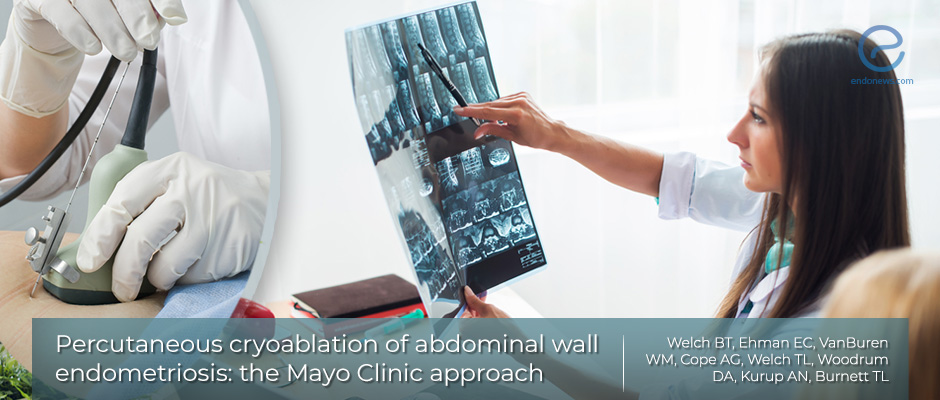Treatment choices for abdominal wall endometriosis
Feb 19, 2020
Percutaneous cryoablation guided by ultrasonography is a helpful way to eliminate abdominal wall endometriosis and abdominal pain caused by this entity.
Key Points
Importance:
- Abdominal wall endometriosis (AWE), an uncommon form of endometriosis, occurs 0.3-3.5% in total cases, causes abdominal pain and weakness.
Highlights:
- The first-line treatment for abdominal wall endometriosis is surgical resection of the lesion.
- A multi-disciplinary Mayo clinic approach of thermal ablation is advised as it may be useful for durable symptomatic relief.
What's done here:
- A review of the literature has been made for the diagnosis and treatment of abdominal wall endometriosis.
Database:
- The majority of abdominal wall endometriosis occurs following caesarian section delivery or abdominal surgery in the surgical scar but may arise spontaneously.
- Surgical excision is the primary treatment method, it may require mesh or flap placement resulting in prolonged recovery and hospitalization period.
- Ultrasonographic imaging has a weak diagnostic value for its identification.
- CT imaging is the preferred method for diagnosing, but this can be replaced by MRI in practice to better evaluate the extent and staging of endometriosis.
- Percutaneous ablation of the abdominal wall is another choice of treatment in selected patients for the disease and has a minimal complication - local recurrence rates.
- Ultrasound-guided high intensity focused ultrasound therapy has been described and successfully used to cure abdominal wall endometriosis with small complications like early phase local edema.
Lay Summary
Welch et.al, from the Department of Radiology, Mayo Clinic, Rochester, worked with his gynecologist colleagues to underline the current treatment algorithm of abdominal wall endometriosis in Mayo Clinic. Their experience results recently published in the journal "Abdominal Radiology".
Abdominal wall endometriosis diagnosis is frequently delayed due to other causes of abdominal pain, like hernias that occurred after abdominal operations, and tend to be increased by the increasing rate of cesarean section deliveries. When the diagnosis of abdominal wall endometriosis has been made, the primary way to treat is the removal of this lesion, but there are less invasive technical approaches as well.
Percutaneous image-guided cryoablation has been successfully used in some of the soft-tissue tumors and metastases with favorable complication profile. Some of the clinicians used these advantages for their application on abdominal wall endometriosis for decreased pain scores and narcotic requirements during short-term follow-up.
This procedure needs multi-disciplinary teamwork including a gynecologist, diagnostic radiologist, interventional radiologist, and anesthesia care team and necessitates an appropriate patient selection.
The Mayo Clinic experiences about this technique are under debate in this paper and every single step before and after the image-guided cryoablation has been told with detail.
To prevent post-intervention edema of the abdominal area, the authors used controlled corticosteroid infusion starting at the beginning of the procedure and they find this practice also helps to improve the recovery period.
Three months after ablation, taking an MRI for a re-evaluation of the possible decreased size of abdominal wall endometriosis would confirm the success of the treatment. The pre- and post-ablation pain scores should also be measured.
Further wide range of studies about the abdominal wall endometriosis are essential and the less invasive treatment methods than surgery should be on the debate.
Research Source: https://www.ncbi.nlm.nih.gov/pubmed/31894380
cryoablation thermal ablation abdominal wall endometriosis USgHIFU (ultrasound-guided high intensity focused ultrasound therapy) endometriosis.

